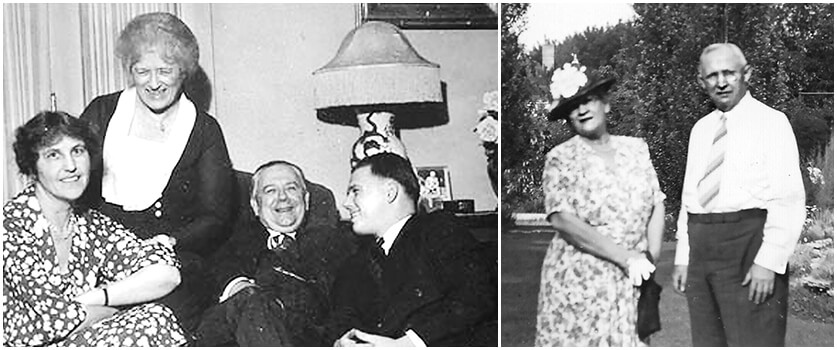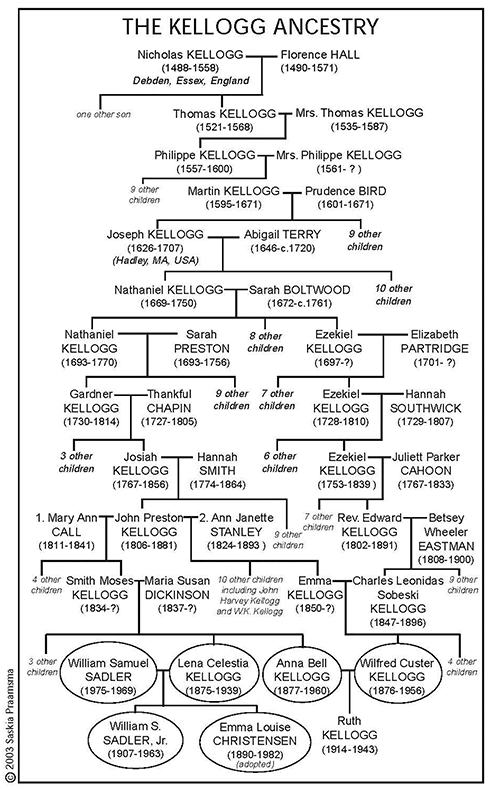The Contact Commission
MORE MOVEMENT HISTORY
- The Contact Commission
- 533 Diversey Parkway
- The Plan for the Urantia Book Revelation
- Major Growth Steps in the Urantia Movement
- "I Remember the Forum"
- "Until We Meet Again"
- The Split: A Blessing in Disguise
- Sherman's 1942 Publishing Suggestions
- Sherman's 1942 Organization Suggestions
- The 1942 Forum Petition
- Sir Hubert Wilkins and the Urantia Book
- Forum Data and Apocrypha
- Childhood Days at the Forum
- Historic Urantia Newsletters
- Forum Days
- The Value of an Accurate History
- The Forumites
- Forumite Clarence Bowman
- Separate Publishing of Part IV
- The JANR Debate (2000)
- No Urantia Church-Not Yet!
- A Box of Chocolates
- 2003: Open Letter to Larry Mullins
- Urantia in Australia in the 1970s
- The Italian Translation Story
- La Storia de Il Libro di Urantiago
- The Urantia Book and Oahspe
- Webster Stafford's 1952 Urantia Report
by Matthew Block
(compiled from The Urantia Diaries of Harold and Martha Sherman)

THE CONTACT COMMISSION was supposedly charged by the superhuman directors of the Urantia revelation to be present at the sessions in which an unconscious man, whose identity was known only to the Contact Commissioners, transmitted communications from the revelators. Dr. Sadler also claimed to converse with invisible beings, such as midwayers, on his own.
In addition to their family connection, William, Lena, Anna and Wilfred had an important thing in common: they had all spent their formative years as Seventh-day Adventists. Seventh-day Adventism was a small but active Christian denomination which arose in mid-19th century America and had its headquarters at Battle Creek, Michigan. One of its dominant figures was Ellen G. White, who was recognized by Seventh-day Adventists as having the gift of prophecy. She wrote voluminously of her visions and of the messages she had received from higher beings such as the third angel of the Book of Revelation.
The two Kellogg sisters and their future husbands all moved, at various points in their lives, to Battle Creek to study or work at Seventh-day Adventist institutions. They all knew Ellen G. White and her immediate relatives and were imbued in the SDA culture of revelation. The Urantia phenomenon occurred shortly after the four had drifted away from Seventh-day Adventism. Being itself the communication of an ongoing revelation, this phenomenon was thus not wholly foreign to the four.
* * *

WILLIAM SAMUEL SADLER SR. (1875-1969) was born in Spencer, Indiana, and schooled at home in nearby Wabash and in Crawsfordsville, Indiana. Embracing Seventh-day Adventism as a child (his parents, Samuel Cavins and Sarah Izzabelle Wilson Sadler, were already adherents), in 1889 he moved to Battle Creek, Michigan, where he worked at the Battle Creek Sanitarium and attended Battle Creek College, both SDA institutions. After working for fellow SDA members Dr. John Harvey Kellogg and his brother Will K. Kellogg, selling breakfast cereal and other vegetarian products to grocery stores, in 1893 Sadler was sent to Chicago by Dr. Kellogg, to help manage the SDA medical mission in Chicago. The purpose of the mission was to rehabilitate and Christianize slum dwellers. There he founded and co-edited The Life Boat magazine, which reported on the mission’s activities. He also attended classes at Chicago’s Moody Bible Institute.
In 1897 Sadler married Dr. Kellogg’s half-niece, Lena Celestia Kellogg. Their first child died as an infant in 1900. A year later, the Sadlers were sent by Kellogg to establish a new medical mission in San Francisco, and William became an elder (ordained minister) of the SDA Church. That same year both William and Lena enrolled at Cooper Medical College in San Francisco. In 1903 William became caught in a church policy dispute between the SDA leader and prophet, Ellen G. White, and Dr. Kellogg, and at White’s request the Sadlers returned to Battle Creek, where they resumed their medical educations at the SDA’s American Medical Missionary College.
Graduating in 1906, they moved to La Grange, Illinois, a suburb of Chicago, to work at the SDA-run Hinsdale Sanitarium. In 1907 their son, William Samuel Sadler, Jr., was born. About this time they founded The Chicago Institute of Physiologic Therapeutics, which administered treatments similar to those of Dr. Kellogg. Sadler also became a professor of physiologic therapeutics at the Post Graduate Medical School of Chicago.
From 1907 to about 1923, the Sadlers also lectured on the Chautauqua-Redpath circuit,2 on such subjects as preventive medicine and slum conditions. Shortly after 1913 the Sadlers ended their involvement with the Seventh-day Adventist church, moving from La Grange to Chicago.
In about 1920 Sadler became senior attending surgeon at Chicago’s Columbus Hospital. Sometime in the 1930s he began calling himself a psychiatrist, becoming a consultant in psychiatry at the same hospital. He lectured in pastoral psychiatry at the Presbyterian Theological Seminary (later called the McCormick Theological Seminary) in Chicago from about 1930 to 1956.
Active in the popularization of physical and mental hygiene, Sadler wrote dozens of articles for such magazines as Ladies’ Home Journal and The American Magazine. He also wrote over thirty books, many of which, it has recently been discovered, were heavily derived from books by other authors. (See The Sadler Project on www.urantiabooksources.com for studies tracing Sadler’s use of sources in several of his books.) His best-known works were The Mind at Mischief: Tricks and Deceptions of the Subconscious and How to Cope with Them (1929) and the textbook, Theory and Practice of Psychiatry (1936).
Outliving his wife by some thirty years, Sadler played a leading role in forming the Urantia Foundation and the Urantia Brotherhood and in publishing the Urantia Book. He died in 1969, without ever publicly identifying himself with the Urantia phenomenon.
* * *
ANNA B. KELLOGG was born in Waupun, Wisconsin in 1877, was Lena K. Sadler’s younger sister by two years. She was the fifth and youngest child of Smith Moses and Maria Dickinson Kellogg, two Seventh-day Adventists with pioneer roots in Michigan. Smith’s half-brothers, Dr. John Harvey Kellogg and Will Keith (better known as W.K.) Kellogg, were prominent citizens of Battle Creek; Dr. Kellogg was head of the world-famous Battle Creek Sanitarium, and W.K. went on to found the Kellogg Company, a multinational manufacturer of breakfast cereals and other foods.
Like Lena, Anna became a registered nurse, probably receiving her education, as Lena had, at the Seventh-day Adventists’ Missionary Nurses Training School, in Battle Creek. In 1906, when Lena and William became physicians after graduating from the American Medical Missionary College, Anna accompanied the Sadlers to La Grange, Illinois. All three joined the staff of the nearby Hinsdale Sanitarium, an SDA-affiliated institution, two of whose original trustees were John Harvey Kellogg and William S. Sadler. Anna also traveled with the Sadlers on Chautauqua-Redpath tours as “The Sadler Company” from 1907 to about 1917. She lectured on nursing, cookery and domestic hygiene.
In 1912 she married her half-first cousin, Wilfred Custer Kellogg; they shared a grandfather, John Preston Kellogg.
* * *
WILFRED CUSTER KELLOGG was born in Vermont in 1876, a full nephew of John Harvey and W.K. Kellogg. In 1896, he moved to Battle Creek with his mother, Emma, and four siblings, after the death of his father, Charles, a circuit-riding Seventh-day Adventist minister. Wilfred had only a sixth-grade formal education.
He worked as a clerk for John Harvey Kellogg’s Modern Medicine Publishing Co. and then at Kellogg’s Sanitas Nut Food Co., where he was promoted to assistant general manager. From 1907 to 1909 he was manager of the sales department at W.K. Kellogg’s Battle Creek Toasted Corn Flake Co., the forerunner of the Kellogg Company. At the time of his marriage, he was secretary of the Battle Creek Sanitarium, as well as secretary-treasurer of the Battle Creek Optical Co.
Wilfred and Anna were married on August 28, 1912 in Kenosha, Wisconsin, a state which permitted first-cousin marriages. Later in the day they participated in a double-wedding ceremony at the Sadler home in La Grange. From then on, Wilfred and Anna stayed close to the Sadlers. In 1914 their daughter Emma Ruth (“Ruth”) was born, nearly fully deaf.
In 1942, Wilfred and Anna were living in an apartment around the corner from 533 Diversey Parkway, at 2754 N. Hampden Ct., with Ruth, now 27 or 28. Anna worked as a nurse in Sadler’s practice and Wilfred was Sadler’s office manager. Ruth had been a psychologist at the Illinois School for the Deaf, in Jacksonville, Illinois.
Wilfred played a large part in handling matters related to the publishing of the Urantia Book and the securing of its copyrights. He was the first treasurer of the Urantia Foundation. Wilfred died in 1956 and Anna in 1960.
* * *
EMMA LOUISE ("CHRISTY") CHRISTENSEN was born on January 29, 1890, in a rural county near Aberdeen, South Dakota. She was the sixth of eight children born to Danish-immigrant farmers Nels and Rosalia (Bald) Christensen. Her mother died when she was five. She attended Carleton College in Northfield, Minnesota, majoring in English, and took a two-year extension course at the University of Minnesota in St. Paul.
On February 9, 1914 she married Christian J. Davidson in Clay County, South Dakota, but the marriage was short-lived; the 1920 census reports her as a single woman.
From 1915 to 1920 she worked in Minneapolis as assistant chief clerk in the Office of the Comptroller of the Currency, a bureau within the U.S. Department of the Treasury. In November 1921 she transferred to the OCC’s office of National Bank Examiners for the Seventh Federal Reserve District, in Chicago. The following February she was promoted to chief clerk, and held this position until her retirement in late 1946.
In July 1922, as reported in the Shermans’ diary entry for August 14, 1942, “she was struck by a car and knocked unconscious; came to in [Columbus] hospital with Dr. S. working over her. Reported at his office at intervals till completely well. Dr. Lena became interested, and Christy divided her time between her own room and their home, eventually taking [their son] Bill’s room (he being in the Marines) permanently.”
Before moving in to 533 in 1935, she lived a short walk away from the Sadlers’ and became a virtual member of the family. She traveled with them and Bill to Europe in 1928 and to Estes Park, Colorado in 1931.
Later in life she told multiple people that she had typed the successive drafts of the Urantia manuscript on a manual typewriter. She also was responsible for standardizing the spelling and capitalization of the text of the Urantia Book. Christy became a stalwart of the Urantia Foundation and the Urantia Brotherhood. She was secretary of the Urantia Foundation and filled various positions on the Executive Committee of the Urantia Brotherhood, including president and vice-president. She was the last of the Contact Commissioners, dying on May 2, 1982, at the age of 92.
* * *
WILLIAM SAMUEL ("BILL") SADLER JR. was born in La Grange, Illinois on December 15, 1907, the only child of William and Lena Sadler. The Sadlers, along with Wilfred and Anna, moved to Chicago when Bill was a boy.
After graduating from high school at fifteen, he enrolled at Northwestern University. In 1924 he ran away from home to join the United States Marine Corps, applying under a false name (“Winston Stefan Stevens”) and claiming to be 19 instead of 16. He served for four years, in Nicaragua and Haiti, visiting his parents on annual furloughs.
Returning home in 1928, he found a job as a clerk for the National Bank Examiners (which also employed Emma Christensen). He held that position for approximately three years.
On June 20, 1932 he again suddenly left home to join the Marines. A few days afterward he tried to commit suicide by overdosing on sleeping pills. He was in a coma for forty-eight hours and was revived at the U.S. Naval Hospital in Washington, D.C. Dr. Sadler was contacted and arrived at the hospital, where he learned that his son had been diagnosed as being in a “constitutional psychopathic state.” Sadler confided to the attending physician that his son’s behavior had been peculiar for years; that he was seclusive, prone to suicidality, and had recently remained in bed for three days, in an apparent catatonic stupor. Bill was discharged from the Marines under his father’s custody.
On March 9, 1935 Bill married Leone Marie Gill. The couple had three children: William III (who died aged 19 in 1955), Patricia, and Charles. (Patricia became president of the Urantia Foundation in 1992.)
Soon after his marriage, he found work with the Standard Oil Company of Indiana, as investment custodian for its pension fund. In early 1944, he left Standard Oil to do personnel work for a company owned by a former Forumite. In their diary entry of February 10, 1944, the Shermans relate what their Forumite friends Lulu and Erle Steinbeck told them about Bill’s career change: "They said a family, they thought by the name of Berger, who formerly belonged to the Forum and who had gotten Bill his job at Standard Oil some years ago, had now hired him to do personnel work for their firm which services different industries through interviewing and checking on the qualifications of their employees."
In 1947 he started his own personnel and management consultancy business, Sadler and Associates, with offices at 333 N. Michigan Ave. in Chicago.
In 1956, a year after the Urantia Book was published, Sadler, then 48, left his wife and moved to an apartment on 900 N. Lake Shore Dr. He pursued a relationship with Florine Seres, a 23-year-old Master’s graduate from Northwestern University who had joined his company in 1955. They married on August 5, 1958.
In November, 1962, he suffered a stroke while on a trip to New York. He died on November 22, 1963.
One of the few people to have unrestricted access to the Urantia manuscript, Bill became a leading interpreter of the teachings. With his father he taught the first groups organized for the systematic study of the Urantia Book. He was the first vice president of the Urantia Foundation and the first president of the Urantia Brotherhood.
Acknowledgment: Much of the information in these profiles was derived from Dr. Sadler and the Urantia Book (2014), by Sioux Oliva, Ph.D., as well as from Oliva’s as-yet-unpublished timeline of the Sadler-Kellogg family. Other details were drawn from Martin Gardner’s Urantia: The Great Cult Mystery (1995), and from the ubhistory.org and urantiabook.org websites.
- The Redpath-Chautauqua programs featured lectures and discussions on literary, scientific and moral topics. They took place in rural and small-town America from the 1870s to the Second World War. Drs. William and Lena Sadler were popular lecturers on the Redpath-Chautauqua circuit.
- The Redpath-Chautauqua programs featured lectures and discussions on literary, scientific and moral topics. They took place in rural and small-town America from the 1870s to the Second World War. Drs. William and Lena Sadler were popular lecturers on the Redpath-Chautauqua circuit.

